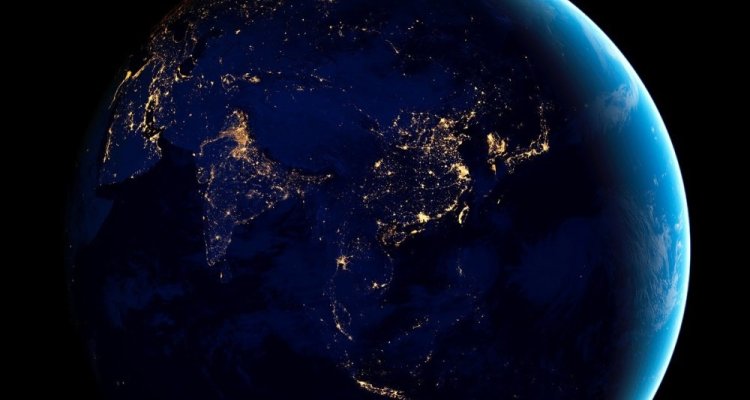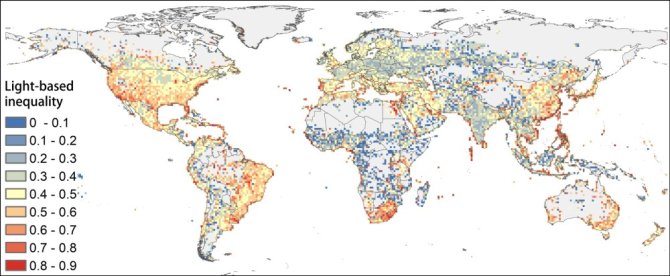
News
Detecting Inequality from Space
Scientists from Wageningen, Utrecht and Nanjing University found a way to estimate income inequality from nighttime light emissions. So-far inequality could only be estimated reliably for a limited group of countries and at a very course spatial scale. The new method makes it possible for the first time to produce a global inequality map. The study appears in this week’s issue of the Proceedings of the National Academy of Sciences.
Seen from space, the places where humans live light up at night. Night-time light thus shows where the humans are. But it reveals more. Recent studies have shown that rich places emit more light per person than poor places, due to larger houses, better street lighting etc. This provides us a way to distinguish poor from rich regions from the combination of satellite images and population density maps. The new research takes this one step further, surprisingly showing that it is also possible to estimate income inequality from space. This method resulted in a map that shows hotspots of equality and inequality in the world.

Straightforward idea
“Of course we cannot see individual incomes from space. However, the fine patterns that appear in satellite images still carry much information” says lead author Usman Mirza. “The idea we got is really quite straightforward” says Marten Scheffer who coordinated the project at Wageningen University & Research. “There is a near universal tendency for people to segregate in richer and poorer neighborhoods. Therefore, you do not need to look at the individual household scale to see contrasts”.
Compared to traditional measurements
The researchers checked their estimates against income inequality measured in the traditional way. Those traditional measurements are based on self-reported income or tax records, both of which are notoriously imprecise, especially in under-developed regions. “As a result we do not know what true income inequality is” says Mirza. “It is all the more surprising that the remotely sensed estimates are quite well correlated to existing estimates.”
Inequality in developing countries
“The big step forward is that we can now get estimates for inequality in regions where data were lacking before, as most notably for developing countries” says Bas van Bavel co-author and a specialist in history of inequality at Utrecht University. “This is important as inequality is one of the defining characteristics of societies.”